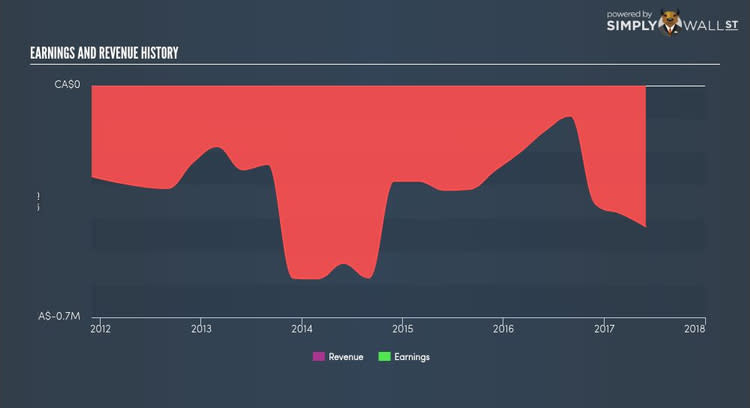What Are The Drivers Of Royal Sapphire Corp’s (TSXV:RSL) Risks?

If you are looking to invest in Royal Sapphire Corp’s (TSXV:RSL), or currently own the stock, then you need to understand its beta in order to understand how it can affect the risk of your portfolio. Every stock in the market is exposed to market risk, which arises from macroeconomic factors such as economic growth and geo-political tussles just to name a few. This is measured by its beta. Not all stocks are expose to the same level of market risk, and the market as a whole represents a beta value of one. A stock with a beta greater than one is considered more sensitive to market-wide shocks compared to a stock that trades below the value of one.
See our latest analysis for RSL
What is RSL’s market risk?
Royal Sapphire’s five-year beta of 1.62 means that the company’s value will swing up by more than the market during prosperous times, but also drop down by more in times of downturns. This level of volatility indicates bigger risk for investors who passively invest in the stock market index. According to this value of beta, RSL may be a stock for investors with a portfolio mainly made up of low-beta stocks. This is because during times of bullish sentiment, you can reap more of the upside with high-beta stocks compared to muted movements of low-beta holdings.
Does RSL’s size and industry impact the expected beta?
With a market cap of CAD CA$5.84M, RSL falls within the small-cap spectrum of stocks, which are found to experience higher relative risk compared to larger companies. Moreover, RSL’s industry, metals and mining, is considered to be cyclical, which means it is more volatile than the market over the economic cycle. So, investors should expect a larger beta for smaller companies operating in a cyclical industry in contrast with lower beta for larger firms in a more defensive industry. This is consistent with RSL’s individual beta value we discussed above. Fundamental factors can also drive the cyclicality of the stock, which we will take a look at next.
Is RSL’s cost structure indicative of a high beta?
An asset-heavy company tends to have a higher beta because the risk associated with running fixed assets during a downturn is highly expensive. I test RSL’s ratio of fixed assets to total assets in order to determine how high the risk is associated with this type of constraint. Given that fixed assets make up less than a third of the company’s total assets, RSL doesn’t rely heavily upon these expensive, inflexible assets to run its business during downturns. Thus, we can expect RSL to be more stable in the face of market movements, relative to its peers of similar size but with a higher portion of fixed assets on their books. However, this is the opposite to what RSL’s actual beta value suggests, which is higher stock volatility relative to the market.
What this means for you:
Are you a shareholder? You may reap the gains of RSL’s returns during times of economic growth by holding the stock. Its low fixed cost also implies that it has the flexibility to adjust its cost to preserve margins during times of a downturn. I recommend analysing the stock in terms of your current portfolio composition before deciding to invest more into RSL. For more company-specific research on RSL, check out our our free analysis plaform here.
Are you a potential investor? I recommend that you look into RSL’s fundamental factors such as its current valuation and financial health. Take into account your portfolio sensitivity to the market before you invest in the stock, as well as where we are in the current economic cycle. RSL may be a great investment during times of economic growth. Continue your research on the stock with our free fundamental research report for RSL here.
To help readers see pass the short term volatility of the financial market, we aim to bring you a long-term focused research analysis purely driven by fundamental data. Note that our analysis does not factor in the latest price sensitive company announcements.
The author is an independent contributor and at the time of publication had no position in the stocks mentioned.

